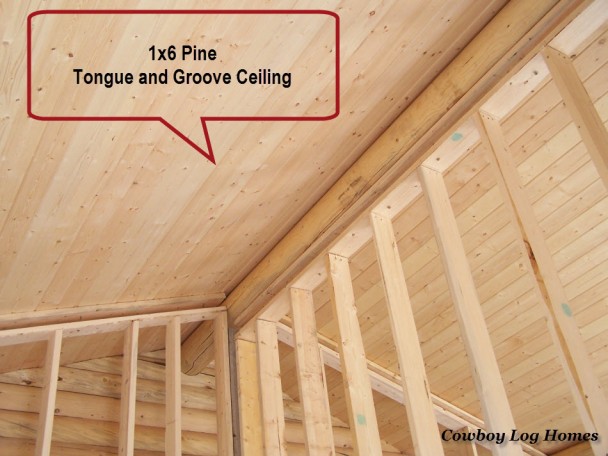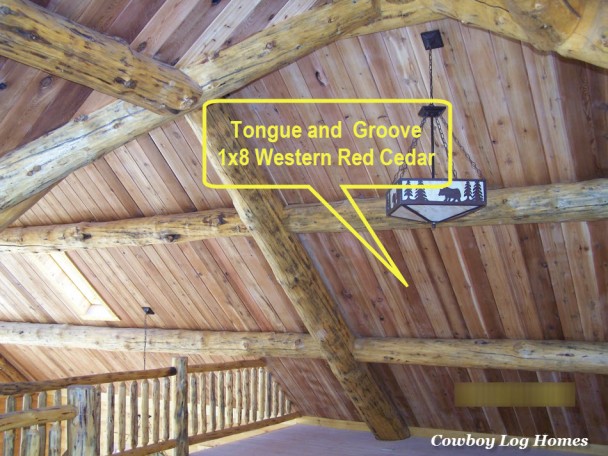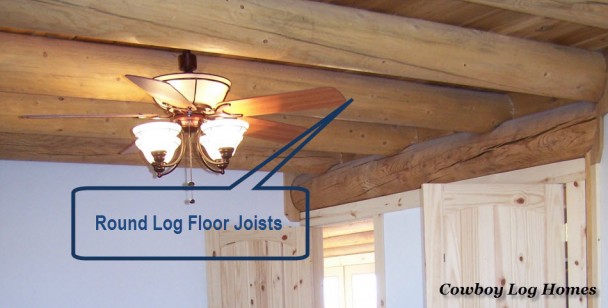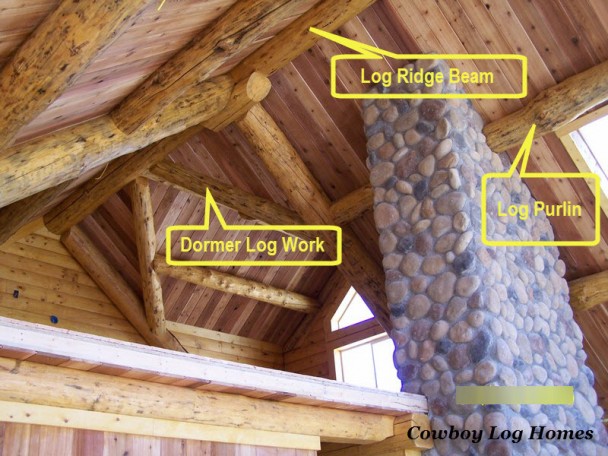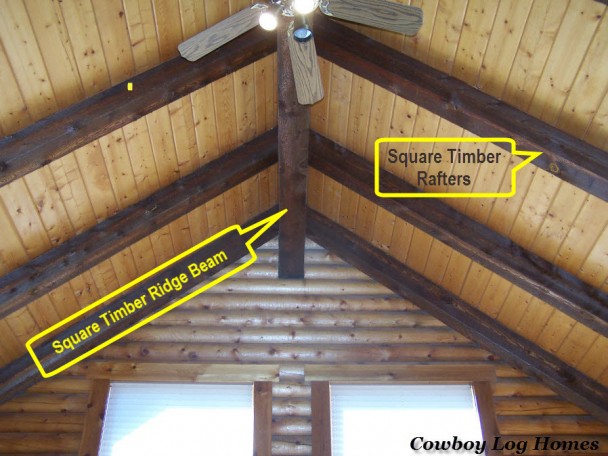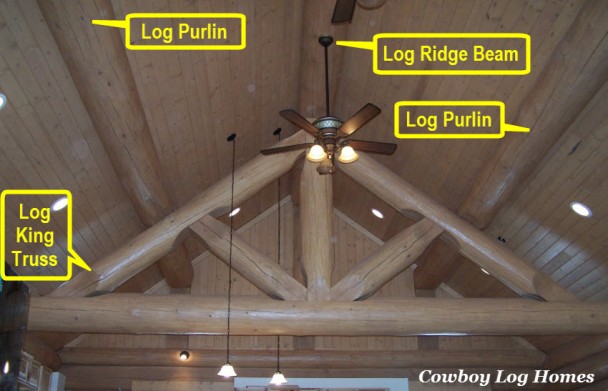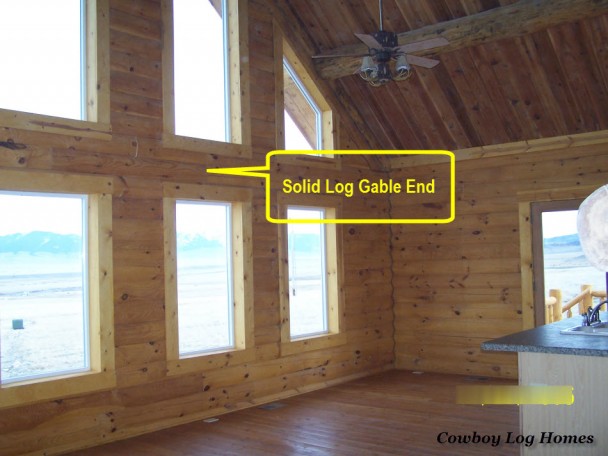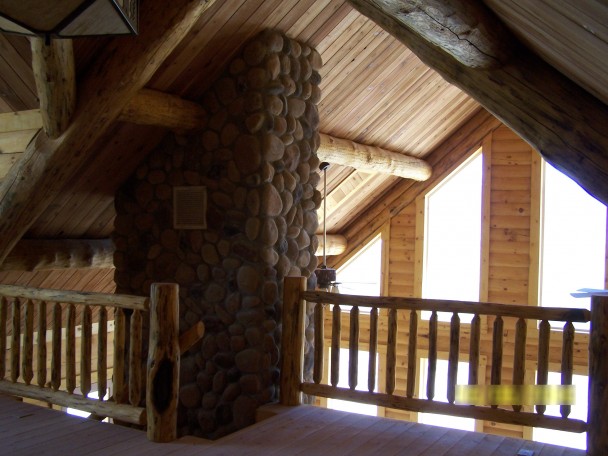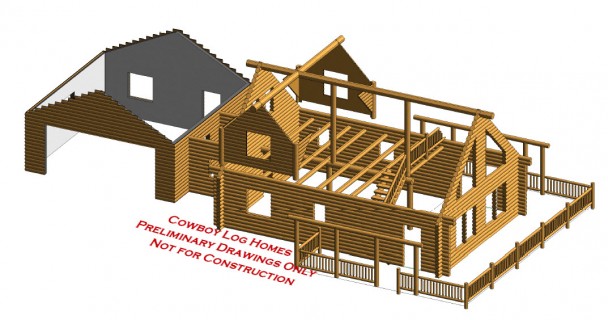Interior Log Home Anatomy
Sue | October 22nd, 2015 - 5:31 pmWhen you are reading down through a log home bid you soon find yourself thinking, “Gee, what does some of these terms mean?”. Right at that moment you have crossed over from being a log home observer-– to being an owner. The dreaming stage of reading log home magazines, looking through cabin websites, and browsing hundreds of photos of log homes on google images is past. Now you have the reality of beginning the journey of building your own home.
So let’s take a minute and match some common terms, which might not seem too common to you, to some photos.
For Our Exterior Log Home Anatomy Details Article Click Here
Tongue and Groove Ceilings
The first term is Tongue and Groove Ceilings. Raise your hand if you know what this means 🙂 or just read on–
Tongue and Groove Ceilings refers to the wood ceilings that are often found on the interior of log homes. Tongue and groove ceilings are usually 1×6 pine boards with the grooved pattern. Tongue and groove ceilings can also be from another wood species– such as western red cedar. Notice the difference between the above and below photos in both color and board width. In both photos the tongue and groove had not been treated yet with any stain or wood sealant.
The 1″ x 6″ is the most common common size but 1×8 is really lovely, as is 1×10 or 1×12. For a log home we have found 1×4 tongue and groove to almost look ‘fakey’. It is too narrow and almost lends itself to looking like laminate wood or Wayne’s coat.
Log Floor Joists
The next item is log floor joists. Log floor joists are the logs that are used to hold up the loft. Instead of being built into the floor, as in a conventional home, many log homes leave these exposed. These logs can be either round logs or square timbers.
Above is an example of round log floor joists and also the round log loft girder beam. Floor joists and girder beams can also be square in shape. Often all of the exposed log work is the same profile. For example if you want a round log ridge beam, then for our log shell packages we typically include round support posts, round floor joists, round log header beams, round log girder beams, round log trusses, purlins, rafters, etc. If you desire a square profile look then usually all of the exposed log work is square, including members such as: roof system, support posts, floor joists, header beams, etc.
And here we have handcrafted log floor joists. This is where the natural log is hand peeled and the natural taper of the log is preserved. We see this type of log floor joist most commonly in a handcrafted log home or a milled log home with handcrafted log accents and members. This one below is part of the Montana plan.
Log Roof System
Another structural item on a log home quote is the log roof system. A log roof system contains only the LOG members needed to support the roof. This does not include the sheathing, TJI rafters, or other roof build up.
The log ridge beam is first. It is the log that runs along the very top of the house. Sometimes it is called the ridge pole. If a log home has a gable dormer there is also usually a log ridge beam for each dormer.
Another log member is the log purlins. Log purlins run through the house in the same direction as the ridge beam. Log purlins come in pairs. The log home above has two sets of log purlins (for a total of four). Can you find them?
Instead of running front to back through a home, log rafters extend down from the ridge beam to the top of the log walls. Below we see square timber rafters descending from the square timber ridge beam. Log roof systems can be made from square timbers or round logs, just as we saw with the floor joists. Square timbers means the logs have been cut or squared into rectangular dimensions.
Sometimes when a loft is taken out of a plan a log or timber truss is needed to support the roof. This is the case with our next example. This is a log home with a great room 24 feet wide and a 9/12 pitch roof. In order to support the cathedral ceiling a log king truss was added. We also see a log ridge beam and two log purlins with a 1×6 pine tongue and groove ceiling.
In contrast, below is a log home that has no log work in the ceiling. We have found that most log home owners like a lot of exposed log or timber work within their homes. We prefer to include many log members. This helps to retain the innate charm of the log homes while also fulfilling the structural needs. Any roof system can be designed, but part of the ruggedness of a log home is captured with the open beam work.
For a more modern feeling log home less exposed log work might be desired.
Gable Ends and Log Gables
The gable end of a home is the triangular part where the ceiling extends up into the roof line. Most log home owners want to capitalize on a lofty cathedral ceiling. This is a stacked log gable end of the home. The solid logs extend all the way up to the ridge beam. A Swedish Cope style log home almost always has solid log gable ends.
Below is the interior of a stacked log gable from the loft.
If you choose a tongue and groove stacked log home or a handcrafted log home then sometimes 1×6 pine tongue and groove is used to finish the interior of the gable of the home.
Dormers
The loft or upper floor of a home goes up into the triangular part of the roof. Most log homes do not have a full two stories. Instead dormers and gables are used to gain more space and headroom in the upper floor. This follows more of the Cape Cod home style.
It is wise as a homeowner to be able to understand the various items which are listed on your sheet. Having a builder you can trust is a huge piece of the puzzle, but still taking the time to educate yourself is smart. Just today some customers of ours, that we built a handcrafted log home three years ago, stopped by to say, “Hi”. As they looked through some of the construction drawings of our current projects they shook their heads and remarked how much they now understand about log homes that they had no concept of just three years ago.


